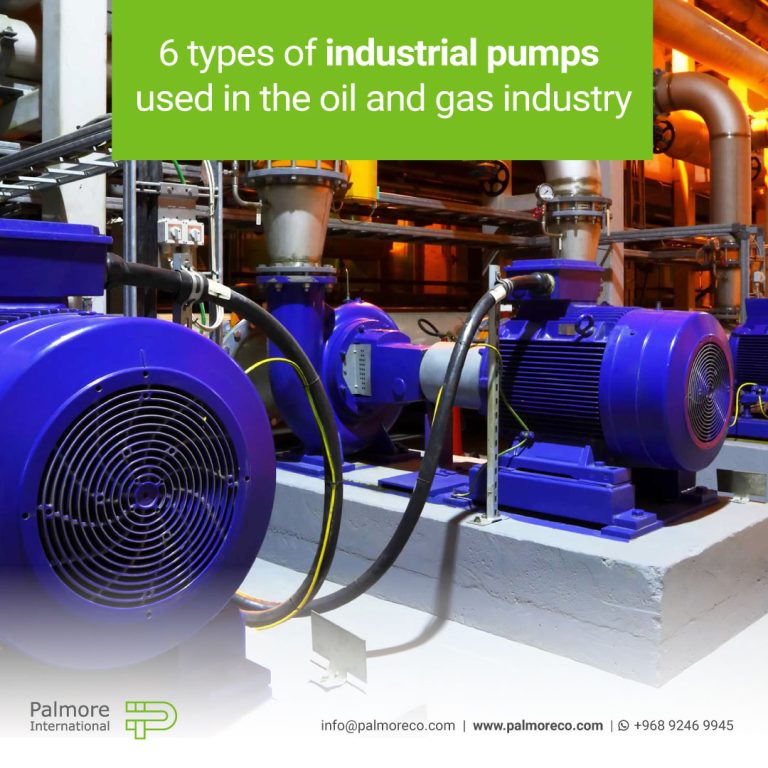
6 types of industrial pumps used in the oil and gas industry
Industrial pumps are a type of basic equipment required at every stage of oil and gas operations. Basically, they help to transport fluids from one point to another. For example, pumps can be used to transport crude oil from the storage tank to the pipeline, and mud pumps can be used to circulate drilling mud inside the drill hole ring and return to the storage tank for refining.
A pump is generally a device that takes mechanical energy from an external source and gives it to a fluid that passes through it. As a result, the fluid energy increases after leaving the pump. This device is used to transfer fluid to a certain height or to move fluid in various hydraulic circuits and piping systems, and in general to transfer fluid from one point to another.
In selecting the type of pump and its design, hydraulic characteristics of the system, physical and chemical properties of the fluid such as viscosity, specific gravity, temperature, corrosion, as well as the presence of impurities and gases with the fluid and finally the amount of fluid passing through the pump per unit time, mode Comments are placed.
– The most common way of dividing pumps is based on how energy is transferred to the fluid. In this method, pumps are divided into two main categories:
1- Dynamic Pumps
Pumps from which energy is transferred to a fluid continuously are called dynamic pumps. Centrifugal pumps are a type of dynamic pump.
Displacement Pumps
Pumps from which energy is transferred to the fluid intermittently are called displacement pumps. Reciprocating (reciprocating) pumps are a type of displacement pump.
2- Centrifugal Pumps
The most common type of Industrial pump is the centrifugal type because:
Centrifugal pumps are more important among other types of pumps due to their simple construction shape, low volume to power ratio and great variety of uses compared to other pumps:
Each centrifugal pump has the following sections:
1) Suction
2) Discharge
3) Shell
4) Impeller
3- Industrial pumps used in the oil and gas industry
In oil and gas operations, process fluids are possible from easy to difficult. Depending on the nature of the material you want to transfer and the amount of flow you need, you will need a suitable pump for your needs. In this article, we introduce the types of industrial pumps used in the oil and gas industry and their working methods.
Different types of industrial pumps are used to transfer liquids in the oil and gas industry. Pumps used in O&G can be classified based on their design and construction and are generally divided into 6 main categories:
Centrifugal pumps
Gear pumps
Diaphragm pumps
Measuring pumps
Progressive cavity pumps
Reciprocating reciprocating pumps
Read this article
Oil and gas industry equipment
4- Centrifugal pumps
Centrifugal pumps are the most common types of pumps used in the oil and gas industry. Centrifugal pumps use centrifugal force to rotate the pump impeller to pump fluid into the pump and force it to drain through the centrifugal section. The flow through the pump is controlled by the discharge flow control valves.
Single-stage centrifugal pumps are primarily used to transfer low-viscosity liquids that require high flow rates. They are commonly used as part of a larger pump network, including other centrifugal pumps such as horizontal multi-stage pump units for transporting crude oil or water injection pumps used in secondary oil and gas recovery.
5- Reciprocating reciprocating pumps
Piston pumps are one of the most widely used industrial pumps in the oil and gas industry. Piston Pumps Using the reciprocating motion of the pistons, they apply fluid pressure to a piping system in an enclosed cylinder. Piston pumps are considered constant flow pumps because they are constant at a certain speed, despite system pressure and flow. The relief valve is an essential part of any piston pump drain system to prevent overpressure of the pump and piping system.
6- Diaphragm pumps
Diaphragm pumps are one of the most diverse types of oil and gas pumps in the industry and transfer fluids through positive displacement with valves and diaphragms. The principle of operation of this pump is that reducing the volume increases the pressure in the vacuum and vice versa. Diaphragm pumps are suitable for large volume fluid transfer operations in oil refineries. They also require much less maintenance than positive displacement pumps due to less moving parts and less friction during operation, and are available in compact designs.
At a disadvantage, diaphragm pumps are prone to “blinking”; Low pressure conditions inside the system that slow down the pumping operation. Fortunately, the flashes can be corrected using the back pressure regulator. For this reason, they are not suitable for continuous or remote pumping operations because they generally do not have high pressure conditions.

